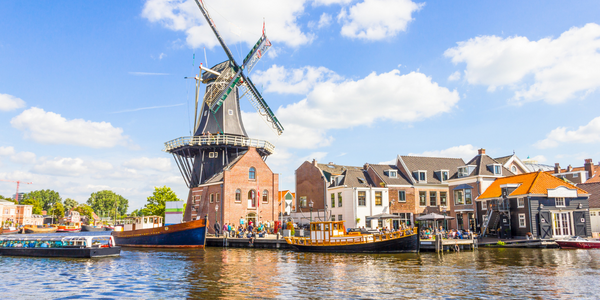Applicable Industries
- Automotive
- Cities & Municipalities
Applicable Functions
- Logistics & Transportation
Use Cases
- Public Transportation Management
- Smart City Operations
Services
- Testing & Certification
About The Customer
The customer in this case study is the City of Melton, a fast-growing suburb located in Victoria, Australia. The city's residents were heavily dependent on private cars for commuting, with public buses accounting for only 1% of the total trips. The city's bus service was underperforming, with only five out of forty-seven bus routes meeting the state's minimum standards. To address this issue, the Melton City Council initiated the 'Moving Melton' project in 2022, aiming to redesign the city's bus network and improve the quality of public transportation services.
The Challenge
The City of Melton, a rapidly growing suburb in Victoria, Australia, was facing a significant challenge with its public transportation system. The city's residents were heavily reliant on private cars, with an estimated 85% of weekday trips and 93% of weekend trips made by car. The use of public buses was at a mere 1%, indicating a decline in patronage despite the increasing population. The primary reason for this was the poor service quality of the bus system. Out of the forty-seven bus routes in the city, only five met the state's minimum standards. To address this issue, the Melton City Council initiated a project called 'Moving Melton' in 2022, aiming to redesign the city's bus network.
The Solution
The Melton City Council partnered with Remix to transform their bus network planning process. Initially, the 'Moving Melton' project was managed using Excel and a set of GIS tools. However, by early 2022, the Remix Planning suite had revolutionized the process, enabling the council's teams to quickly test, iterate, and collaborate on multiple network redesign scenarios. The council developed four separate proposals, one cost-neutral and three with varying levels of increased investment. These proposals were evaluated based on their impact on job access and other key metrics. The council also published interactive maps on the 'Moving Melton' site, allowing the public to interact with Remix's data layers and the isochrone-based travel-time tool, 'Jane'. This enabled the residents to better understand the trade-offs and benefits of each proposed network.
Operational Impact
Quantitative Benefit

Case Study missing?
Start adding your own!
Register with your work email and create a new case study profile for your business.
Related Case Studies.

Case Study
Turning A Stadium Into A Smart Building
Honeywell created what it called the “intelligent system” for the National Stadium in Beijing, China, turning the venue for the opening and closing events at the 2008 Summer Olympics into a “smart building.” Designed by highly controversial artist Ai Weiwei, the “Bird’s Nest” remains one of the most impressive feats of stadium architecture in the world. The 250,000 square meter structure housed more than 100,000 athletes and spectators at a time. To accommodate such capacity, China turned to Honeywell’s EBI Integrated Building Management System to create an integrated “intelligent system” for improved building security, safety and energy efficiency.
.png)
Case Study
Smart Street Light Network (Copenhagen)
Key stakeholders are taking a comprehensive approach to rethinking smart city innovation. City leaders have collaborated through partnerships involving government, research institutions and solution providers. The Copenhagen Solutions Lab is one of the leading organizations at the forefront of this movement. By bringing together manufacturers with municipal buyers, the Copenhagen Solutions Lab has catalyzed the development and deployment of next-generation smart city innovations. Copenhagen is leveraging this unique approach to accelerate the implementation of smart city solutions. One of the primary focus areas is LED street lighting.

Case Study
Integral Plant Maintenance
Mercedes-Benz and his partner GAZ chose Siemens to be its maintenance partner at a new engine plant in Yaroslavl, Russia. The new plant offers a capacity to manufacture diesel engines for the Russian market, for locally produced Sprinter Classic. In addition to engines for the local market, the Yaroslavl plant will also produce spare parts. Mercedes-Benz Russia and his partner needed a service partner in order to ensure the operation of these lines in a maintenance partnership arrangement. The challenges included coordinating the entire maintenance management operation, in particular inspections, corrective and predictive maintenance activities, and the optimizing spare parts management. Siemens developed a customized maintenance solution that includes all electronic and mechanical maintenance activities (Integral Plant Maintenance).

Case Study
Buoy Status Monitoring with LoRa
The Netherlands are well-known for their inland waterways, canals, sluices and of course port activities. The Dutch Ministry of Infrastructure indicates that there are thousands of buoys and fixed items in and near water environments that would profit from IoT monitoring. One of the problems with buoys for example, is that they get hit by ships and the anchor cable breaks. Without connectivity, it takes quite some time to find out that something has happened with that buoy. Not to mention the costs of renting a boat to go to the buoy to fix it. Another important issue, is that there is no real-time monitoring of the buoys at this moment. Only by physically visiting the object on the water, one gains insight in its status.

Case Study
Barcelona Case Study
Barcelona’s heavy traffic and its associated high levels of pollution were the primary factors that motivated some companies and universities to work on strategies for improving traffic in the city centre. Bitcarrier is one of the technologies involved in the In4Mo Project, whose main objective is to develop the applications that form the core of smart mobility, one of the fundamental pillars of the smart city concept.








